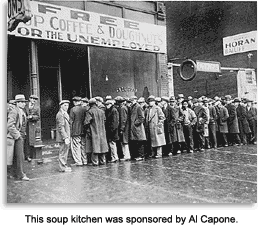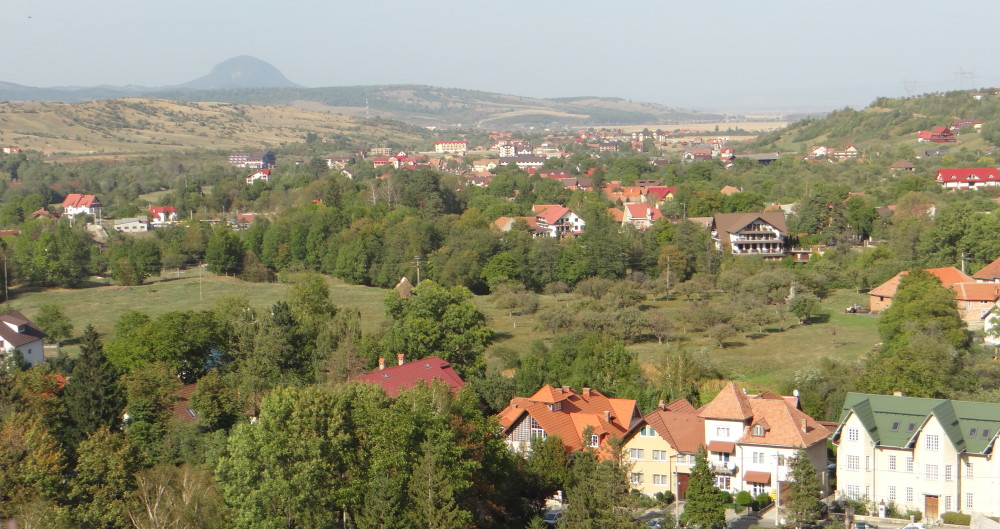“There is no America! There is a cash machine.” – Michael Savage
 Photo credit: Wikipedia
Photo credit: Wikipedia
We are experiencing the “Greatest Invisible Depression” in the history of the United States; the Depression Era soup kitchens and lines are unseen, coming to the mail box in the form of welfare checks, yet the government cash machine, the Fed, keeps printing bogus trillions that have no backing in goods and services.
The welfare checks keep coming but the unemployment figures reported have dropped to 5.5 percent! According to economists, 5-6 percent unemployment represents FULL employment of the economy. Yet millions of discouraged workers have conveniently disappeared from the government statistics. They are now perhaps found in three categories: disability recipients, the invisible Americans struggling on their own to survive, or the generational government-dependent Americans.
We are living through the precipitous decline and fall of the American Empire, the most successful nation in the history of mankind. It is a sad spectacle to watch since its triumph has contributed to the success and prosperity of all humanity in spite of the revisionist lectures to the contrary coming from the progressives who are enjoying shamelessly the spoils of American capitalism and free markets.
It is hard to predict when America will trail into the ash bins of history, in the footsteps of the once successful Roman Empire, and what will drive the final nail in its coffin. What will it be?
– The invading hordes of illegals that will colonize and vanquish the American Rome?
– The endemic political and economic corruption at all levels of government?
– The degradation of society, the moral decay, the destruction of the family unit?
– The declining health of its population, the demographic self-suicide?
– Diversity, progressive multiculturalism, thus rendering the empire unable to absorb too many divergent and unfriendly cultures?
– Intolerance of Christianity and forced Islamization?
– The inability to keep the borders safe?
– The destruction of the economy from within?
– The unsafe reductions of the armed forces and “chickification” of its ranks?
– The unrelenting and total control of its population by changing the Constitution and the rule of law?
– A military event resulting in the victory of a conquering nation?
What happened to Rome? They built the world’s greatest empire, the greatest military, the longest network of roads, paved streets, raised pavements, city grids, indoor and outdoor plumbing, marble palaces, bridges, military portable hospitals, portable bridges, indoor and outdoor water fountains, public baths with heated swimming pools, heated marble floors, extensive gyms, self-supporting cupolas, eleven aqueducts, just to name a few accomplishments.
Why did their civilization collapse in 476 A.D. when the last emperor resident in the West, Romulus was deposed at Ravenna? The eastern empire (the Byzantine Empire) did not fall until 1453 when the last bastion, Constantinople, fell to the Turks, to Islam. Are there parallels between Rome and our Constitutional Republic?
The distant reaches of the Roman Empire came into contact with Rome through its law, taxation, census, and coinage. The extent of Romanization of all the provinces is still a subject of debate.
Many factors have been debated such as Christianity, the rise of Islam, moral decadence, greed, invasions by barbarians, especially Goths and Vandals, lead poisoning, monetary issues, inflation, corruption, military inability to rule such a vast empire and to defend its borders, even after it split into the Western and Eastern Empire.
Edward Gibbon concentrated on four reasons for the decline of Rome. “After a diligent inquiry, I can discern four principal causes of the ruin of Rome, which continued to operate in a period of more than a thousand years: the injuries of time and nature, the hostile attacks of the barbarians and Christians, the use and abuse of the materials, and the domestic quarrels of the Romans.”
The domestic quarrels of the Romans are interesting to explore because Gibbon referred to peace as having been disturbed by frequent seditions, domestic hostilities, and private wars between the nobles and the people, violating the laws of the Code and of the Gospel.
The earlier history of the empire produced a slow decline over the centuries. Edward Gibbon stated, “The decline of Rome was the natural and inevitable effect of immoderate greatness.” Conquest yielded prosperity and, as soon as it waned, the empire folded like a house of cards, crushing under its own weight. “The story of its ruin is simple and obvious; and instead of inquiring why the Roman Empire was destroyed, we should rather be surprised that it lasted so long.”
Bryan Ward-Perkins believed the demise of the Roman civilization was materialistic. “The capacity to mass-produce high quality goods and spread comfort makes the Roman world rather too similar to our own society, with its rampant and rapacious materialism.”
The Western Roman Empire fell in 476 A.D. and historians still argue today the many variables that contributed to its downfall. It was replaced by feudal lords who vied for power and by the Holy Roman Empire that was neither holy, nor Roman, nor an empire.
The Roman Empire was a very diverse, multicultural hodge-podge of communities allied to Rome called “socii;” of non-patrician citizen of Rome called “plebeians;” of the Roman citizens; of the cavalry troops of the Republican Rome called “equites;” of the freedmen; of the governors who ran the Roman provinces; of the “client kings;” of the Latins, inhabitants of Latium; of the patricians, the aristocratic privileged class of Rome; and of the slaves who supported the economy with their unpaid labor.
At the height of the Roman Empire, more than 25 percent of Rome’s population represented slaves. A rich Roman could own as many as 500 slaves captured and purchased from all corners of the empire, while the imperial household had as many as 20,000.
Rome was tolerant with local cultures, co-opting and rewarding willing indigenous tribes. The Romanization of those occupied is debated even though there is archeological evidence of Roman lifestyle in amphitheaters, fora, bathhouses, public restrooms, and streets aligned in grids, as far away as North Africa and the Middle East.
During the Late Roman Empire, civil service in the government and in the army brought rewards, promotions, and elitist privileges. Emperors and government officials had forgotten what the Res Publica (“Public Things”), the Republic, stood for. The interests of the republic became secondary to their success, enrichment at the public trough, and daily survival.
The fight for personal survival meant that every public servant, including ranking officers could be subject to imprisonment, torture, or killing not at the hands of the enemy but at the hands of other Romans. There are American soldiers who are rotting in jail for doing their job in wartime. And American deserters like Bowe Bergdahl are praised, promoted, and remunerated in absentia, and a soldier-murderers like Nidal Hasan escapes prosecution for his crimes.
Bureaucratic inadequacies and corruption traveled much slower in the Roman Empire. By the time a weakness became obvious, it was quite serious and hard to address. In modern U.S., bureaucratic mismanagement, corruption, and waste are well-known. News and information travel fast but are often unreported or covered up by the main stream media.
As Adrian Goldsworthy states in his book, “How Rome Fell,” “yet the warning from the Roman experience is that major catastrophic failures often arrive both suddenly and unanticipated.” It is Goldsworthy’s opinion that the “fatal decline of the empire came from internal problems.” The self-inflicted decline was impossible to determine when it reached the point of no return.
Is our American superpower in decline and at the point of no return? We are unable to defend our border with Mexico in the same manner that the Romans were unable to defend their Rhine-Danube frontier. Whittaker, in his book, “Rome and Its Frontiers,” made an analogy:
“The Roman Empire of the fourth century was in some ways undergoing the same kind of transformation as the modern nation-state in the face of globalization. Both can be viewed as what Karl Marx called “disordered societies”; that is, as societies where traditional values were in conflict with new interests, when relations between national and foreign cultures were being renegotiated, and when the concept of ethnicity was being redefined under pressure from external frontiers.”
In 376, a large group of Gothic refugees arrived at the Empire’s Danube frontier, asking for asylum. According to Peter Heather, “in a complete break with established Roman policy, they were allowed in, unsubdued.” Within two years, they revolted, destroyed two-thirds of the army and killed the very emperor Valens who received them. It is interesting to note that some of the refugees that we accepted in our own country have become hostile and are trying to destroy our way of life by using tolerance and accusations of bigotry, racism, and Islamophobia against us.
In 301 A.D. emperor Diocletian had an unfortunate idea to curb inflation by passing a law with a harsh punishment for breaking it: death. His law fixed maximum prices for about 1,000 goods, including food, raw materials, textiles, transportation, and wages. The law was not the first tried but the scale was massive and Diocletian was determined to make it successful. Anyone who tried to keep goods off the market would be summarily executed. A series of financial crashes caused people to rush to turn their money into goods, creating a rate of inflation of 1,000% because there was too much money chasing too few goods. The coins were so debased, that what looked like precious metal was mostly copper underneath.
How will we cope when the American economy crashes? What or who will replace the American Empire?
Copyright: Ileana Johnson 2015
